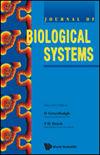DYNAMICS OF ANTI-PREDATOR BEHAVIOR AND EFFECT OF FEAR ON PREY–PREDATOR MODEL
IF 1.5
4区 数学
Q3 BIOLOGY
引用次数: 2
Abstract
Predator–prey interactions are the ubiquitous and natural phenomenon in an ecological system. Predators reduce the prey population’s density by direct killing, which is an essential part of any ecological system. Based on the experimental works, for overcoming predation pressure, prey uses a variety of mechanisms. With Holling type-II functional response, we examined a prey–predator system incorporating anti-predator behavior and the cost of fear into prey. Prey anti-predator activity is a counterattacking strategy in which adult prey targets adolescent predators in order to counteract the potential predation pressure. Fear of predation may disrupt the physiological state of prey species and lead to long loss of prey species. In this study, we investigated this aspect to use a dynamical modeling approach. This research finds a plethora of fascinating phenomena. The studied system exhibits a wide range of dynamics and bifurcations, including saddle-node, Hopf, homoclinic, and a Bogdanov–Takens bifurcation in co-dimension two are among the dynamics and bifurcations observed in the analyzed system. We performed some numerical simulations to investigate the effects of anti-predator behavior and fear on prey and found both affect the prey–predator dynamics significantly. Our numerical examples clearly show that as prey carrying capacity increases, so does the prey’s ability to perceive the risk of predation.捕食者行为的动力学及恐惧对捕食者的影响&捕食者模型
捕食者-猎物相互作用是生态系统中普遍存在的自然现象。捕食者通过直接捕杀来减少猎物的密度,这是任何生态系统的重要组成部分。实验结果表明,猎物克服捕食压力的机制多种多样。利用Holling ii型功能反应,我们研究了一个包含反捕食者行为和恐惧成本的捕食者-捕食者系统。猎物反捕食者活动是一种反击策略,成年猎物以未成年捕食者为目标,以抵消潜在的捕食压力。对被捕食者的恐惧可能会扰乱被捕食物种的生理状态,导致被捕食物种的长期损失。在本研究中,我们使用动态建模方法对这方面进行了研究。这项研究发现了大量令人着迷的现象。所研究的系统表现出广泛的动力学和分岔,包括鞍节点、Hopf、同斜和在协维2中的Bogdanov-Takens分岔是分析系统中观察到的动力学和分岔。我们通过数值模拟研究了反捕食行为和恐惧对猎物的影响,发现两者都对捕食动态有显著影响。我们的数值例子清楚地表明,随着猎物承载能力的增加,猎物感知捕食风险的能力也在增强。
本文章由计算机程序翻译,如有差异,请以英文原文为准。
求助全文
约1分钟内获得全文
求助全文
来源期刊
CiteScore
2.80
自引率
12.50%
发文量
31
审稿时长
1 months
期刊介绍:
The Journal of Biological Systems is published quarterly. The goal of the Journal is to promote interdisciplinary approaches in Biology and in Medicine, and the study of biological situations with a variety of tools, including mathematical and general systems methods. The Journal solicits original research papers and survey articles in areas that include (but are not limited to):
Complex systems studies; isomorphies; nonlinear dynamics; entropy; mathematical tools and systems theories with applications in Biology and Medicine.
Interdisciplinary approaches in Biology and Medicine; transfer of methods from one discipline to another; integration of biological levels, from atomic to molecular, macromolecular, cellular, and organic levels; animal biology; plant biology.
Environmental studies; relationships between individuals, populations, communities and ecosystems; bioeconomics, management of renewable resources; hierarchy theory; integration of spatial and time scales.
Evolutionary biology; co-evolutions; genetics and evolution; branching processes and phyllotaxis.
Medical systems; physiology; cardiac modeling; computer models in Medicine; cancer research; epidemiology.
Numerical simulations and computations; numerical study and analysis of biological data.
Epistemology; history of science.
The journal will also publish book reviews.

 求助内容:
求助内容: 应助结果提醒方式:
应助结果提醒方式:


